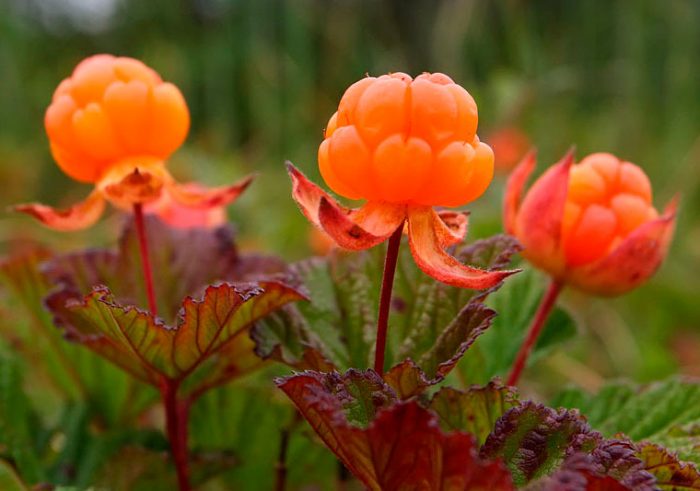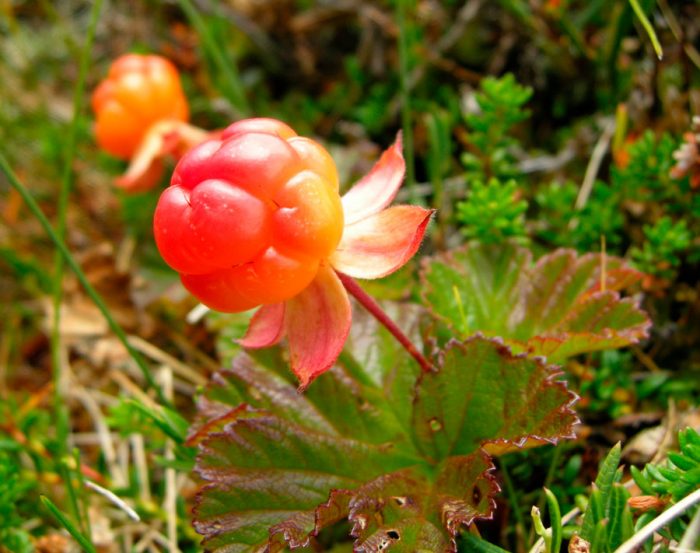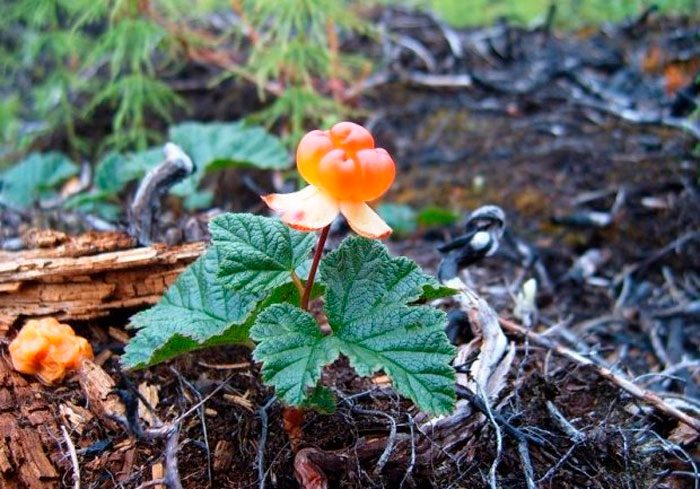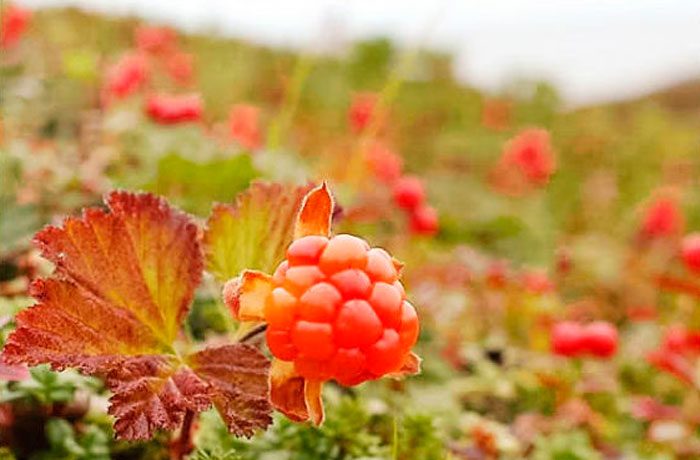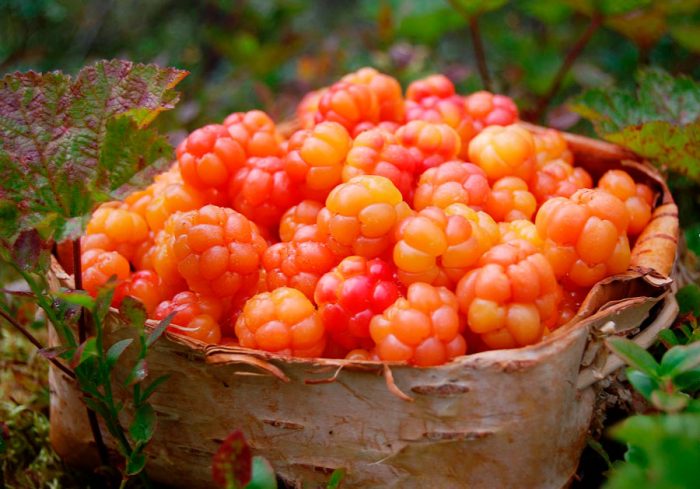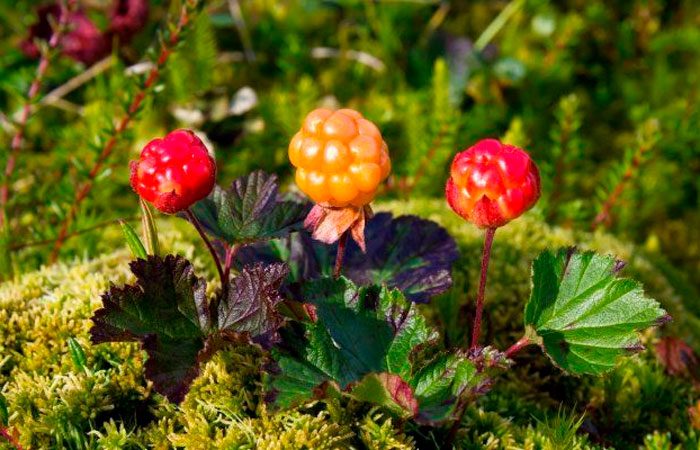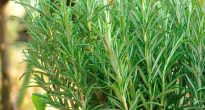The herbaceous perennial plant cloudberry (Rubus chamaemorus) is a member of the Rubus genus of the Rose family. It grows fruits that can be eaten. The scientific name of this plant was derived from the ancient Greek word translated "on the ground", as well as Latin - translated meaning "mulberry", the result is "earthen mulberry". Cloudberry is called both the bush itself and its berries. This plant is also popularly called swamp fire, swamp guard, northern orange, arctic raspberry, moss currant, gloshina and royal berry.
Where can you see cloudberries in nature? This culture is widespread throughout the Northern Hemisphere. This perennial prefers to grow in moss bushes, in the northern forest belt, in peat bogs and in the tundra. Cloudberries can also be found in Siberia, Belarus, central Russia, as well as in the Far East. Cloudberries are cultivated to obtain fruits, from which juice, jam, jam, compote and other preparations for the winter are prepared. Also, these fruits have medicinal properties that are used for medical purposes. In Scandinavia and the United States, this crop is grown on an industrial scale. And in Finland, on a two-euro coin, there is an image of cloudberries, and in this country, an experiment is currently being carried out on the greenhouse cultivation of such a plant. The popularity of this culture is due to the fact that its fruits contain a large amount of biologically active substances. And also, because these berries have medicinal properties that are used during the treatment of certain diseases. At the same time, cloudberries are used in both traditional and folk medicine.
Content
Features of cloudberry
Cloudberry is a herbaceous plant or shrub. The height of the bush is about 0.3 m. The long branchy rhizome is creeping. Shoots are thin, erect. Alternate petioled five-lobed leaf plates, unevenly crenate along the edge, have a wrinkled surface, painted greenish with brown spots. On one shoot, as a rule, there are 2 or 3 leaf plates. The flower is apical, it is painted white. The flowers are unisexual, which means that on some there is only the development of the pistil, and on the rest - the stamens. The fruit is a composite drupe, reaching 15 mm in diameter, outwardly it is similar to a raspberry berry.Unripe fruits are colored red-yellow, as they ripen, their color changes to orange, while the berries become almost transparent, as if made of amber. Fruit ripening is observed in July and August.
Planting cloudberries in open ground
For propagation of cloudberries, the seed method is used, as well as the vegetative method - cuttings. But both of these methods are lengthy and ineffective. A more reliable and simple way is to buy a seedling from a seller with a good reputation, and you can also dig a bush in the forest if possible and plant it on your site. A good cloudberry bush found in the forest with large fruits that tastes good in September can be carefully dug together with an earthen clod. The root system must be carefully packed in a paper bag. It is best to plant a bush in a new place without removing this bag, because cloudberries tolerate transplanting quite hard, and there is no need to stress the plant by wrapping its roots in burlap, and unfolding it before planting. In order to maintain the necessary moisture in the root system, the paper bag should be wrapped on top with polyethylene, but it is better not to tighten it with the landing.
An area suitable for planting should be open and sunny. And the soil should be well-drained, moist, saturated with nutrients and slightly acidic (pH 4.5–5).
Prepare a hole for planting, the approximate size of which should be 0.5x0.5 m. To fill it, man-made swamp slurry is used. To do this, the walls of the pit must be overlaid with a waterproofing material, for example: roofing material, clay or a thick film. The bottom is also laid out with a film, while several holes should be made in it. Then the finished pit must be filled with a substrate, which includes high moor peat and forest litter (3: 1), it contains the mycorrhiza necessary for cloudberries. The substrate must be well tamped and watered abundantly. Do not fill the hole to the top; the substrate should hit about 10 centimeters below its edge. The seedling must be placed in the pit without removing the paper bag (it will decompose over time). Fill the hole with the same soil mixture, while there should be enough of it so that it rises a small hill above the surface of the site. The planted plant must be watered. After the substrate has settled, the surface of the trunk circle should be leveled.
Caring for cloudberries in the garden
If the cloudberry was planted in the fall, then you should start caring for it in the spring, when it starts to grow. It will need to be systematically watered abundantly, weeded, and also loosened the surface of the area around the bushes. The plant should be watered only with lukewarm water, which must be separated from chlorine. It is recommended to arrange watering every day in the evening, and from 50 to 80 liters of water is taken per 1 square meter of the plot. At times, you need to add a couple of grams of citric or acetic acid to the water for irrigation. To reduce the number of irrigations to 2 or 3 in 7 days, the surface of the site must be covered with a thick layer of mulch (peat).
In the first 2 or 3 years of cloudberry growth, special attention should be paid to systematic weeding and loosening of the surface of the site. Once the crop has grown, the weeds cannot harm it. The bushes will bloom in 2-3 ten days of May. It is necessary to ensure that the flowers do not suffer from frost; for this, cloudberries should be covered with spunbond at night.
In the second year of growth, after the ovaries appear on the bushes, they will need feeding. To do this, use a solution of complex mineral fertilizer (1 large spoon for half a bucket of water). It is not recommended to use organics for dressing.
Collection and storage of cloudberries
Fruits are harvested as they ripen, with its beginning in July.Harvest within half a month, after which overripe fruits, when harvested, spread right in the hands and are unsuitable for processing. You need to pick orange, half transparent berries together with sepals, and put them in not very high cans or buckets. Sepals cut off later are used as medicinal raw materials. In the process of collection, as well as transportation, the fruits should be protected from direct rays of the sun, therefore, the containers are covered with burdock foliage or with a clean cloth; polyethylene cannot be used for this purpose.
This berry is extremely poorly stored, especially if it is overripe. In this regard, knowledgeable people recommend, even before you go for berries, prepare sugar syrup, it is suitable for making jam from the cloudberry that is overripe. Compote is recommended to be prepared from those berries that are not ripe. The fruits, foliage, and roots of cloudberries are considered medicinal, and they are extracted from the ground in October or November.
Main types and varieties
A large number of gardeners believe that the cloudberry and its relative, the raspberry (princess), are one and the same plant. Although raspberry and cloudberry are related to the same genus, these plants are different. To date, there are no garden varieties of cloudberries.
Cloudberry properties: harm and benefit
Useful properties of cloudberries
A plant such as cloudberry is considered unique, and its effect on the human body is impressive. It contains substances such as: proteins, pectins, organic acids, fiber, sugars, tannins, phytoncides, antioxidants, fatty acids, plant sterols, vitamins C, A, PP, B1 and B2, as well as trace elements of the hematopoietic series potassium , magnesium, phosphorus, aluminum, cobalt, calcium, iron and silicon. As a result of such a fairly diverse composition, this plant is characterized by diaphoretic, rejuvenating, antimicrobial, antispasmodic, anticancer, fixing, wound healing, astringent, anti-inflammatory, general tonic, immunomodulatory, diuretic, regenerating, choleretic, antiscorbutic and anti-cholagogue effect.
When using the roots, fruits and foliage of this culture, you can get rid of serious diseases, for example, from such as: intestinal and liver diseases, kidney pathology, and the normalization of the cardiovascular system is also observed, as well as the problems of the biliary tract. Eating fruits helps to prevent the development of fermentative and putrefactive processes in the digestive tract, eliminate vitamin deficiency, restore biochemical processes, and also helps to cure skin diseases and colds, and stop internal bleeding. It is also recommended to use the fruits for chronic fatigue, impaired digestion processes, cystitis, diarrhea, dropsy, gout, ascites, scabies and tonsillitis. Cloudberry can cure tuberculosis and cough, and it is also used as a general tonic by people who have had a serious illness. These fruits are also used in cosmetology, for example, Lumene produces a regenerating cream with vitamin C and cloudberry.
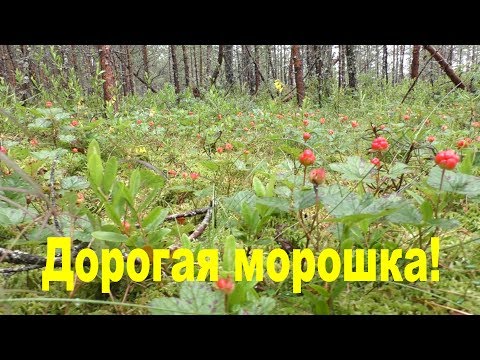

Watch this video on YouTube
Contraindications
Cloudberry fruits should not be used by people suffering from gastritis with high acidity, duodenal and stomach ulcers, especially during an exacerbation of the disease. Also, it cannot be eaten with individual intolerance.

